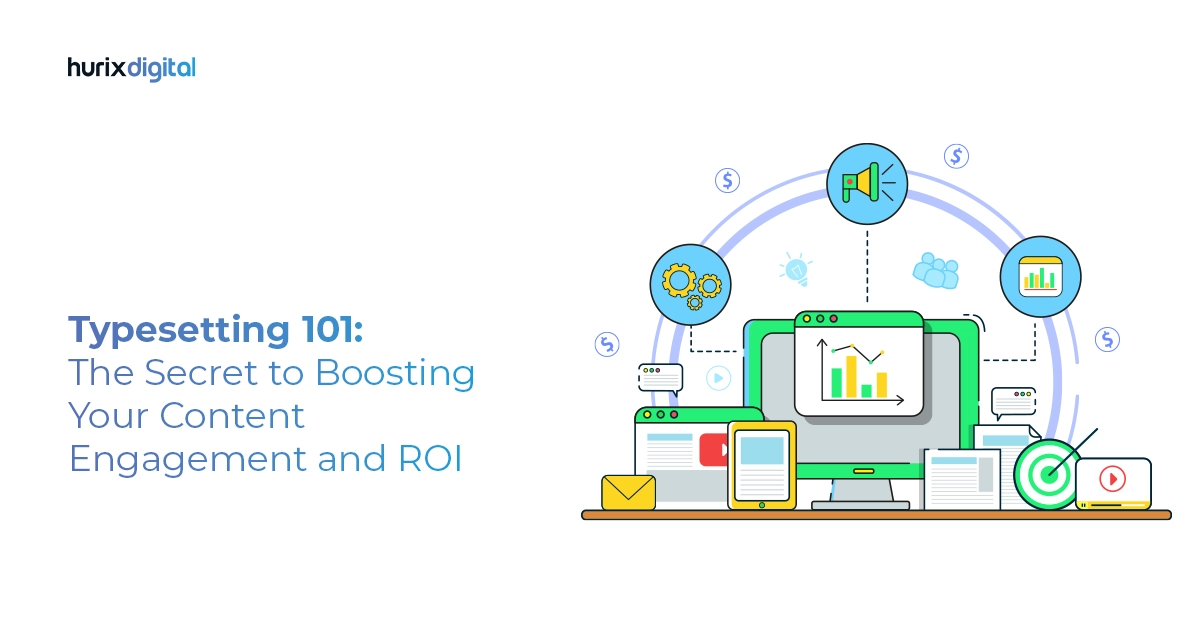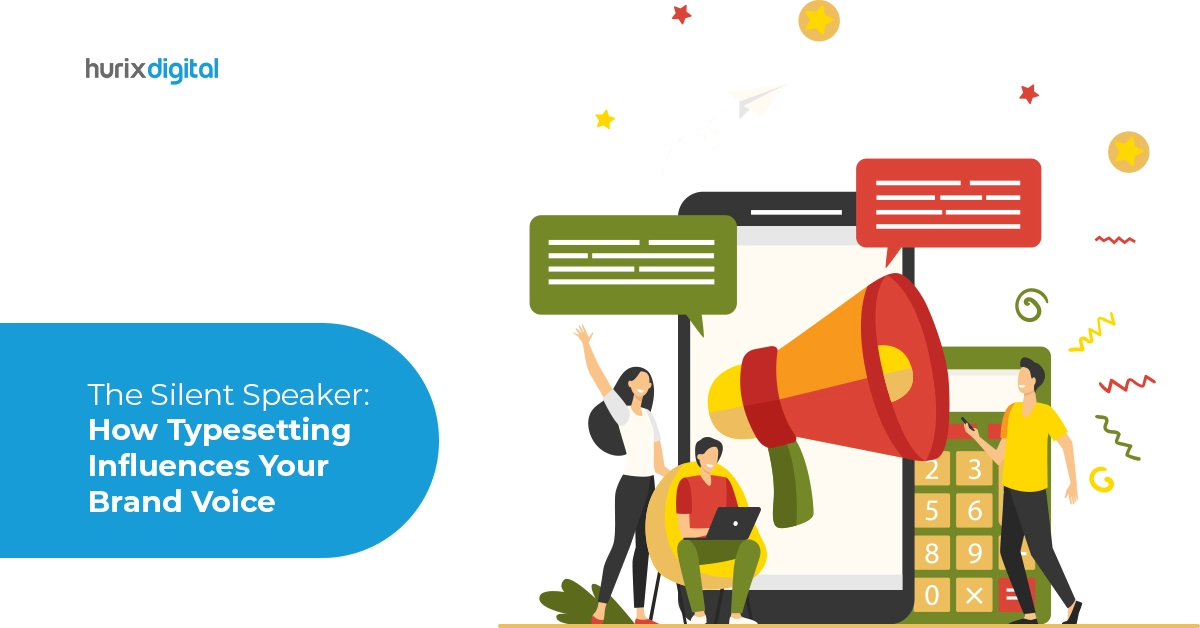
Typesetting 101: The Secret to Boosting Your Content Engagement and ROI
Summary
This article is about how to use typesetting to create engaging and Profitable content. It will help you understand the importance of typesetting and how it can improve the readability, aesthetics, and impact of your content. It will also help you choose the best typesetting services and tools for your business needs.
Did you know that 35% of people skim content rather than read it word for word? That means you only have a few seconds to capture their attention and persuade them to stay on your page. How can you do that? One of the most effective ways is to use typesetting.
Typesetting is the process of arranging and formatting text and images on a page or a screen. It involves choosing the right fonts, sizes, colors, spacing, alignment, and layout for your content. Typesetting can make a huge difference in how your content looks, feels, and communicates to your audience.
Table of Contents:
- What is Typesetting, and Why is it Important?
- How Typesetting Improves Content Engagement?
- How Typesetting Boosts Content ROI?
- How to Write Engaging Content with Typesetting?
- How to Choose the Best Typesetting Services and Tools?
- Conclusion
What is Typesetting? Why is it Important?
Typesetting is the art and science of arranging and formatting text and images on a page or a screen. It is a crucial step in the production of any printed or digital content, such as books, magazines, newspapers, websites, blogs, e-books, presentations, and more.
Typesetting in Word is important because it affects the readability, aesthetics, and impact of your content. According to a study, users judge the visual appeal of a website in less than 50 milliseconds. If your content is poorly typeseted, it can create a negative impression and drive away potential customers.
On the other hand, if your content is well typeset, it can create a positive impression and attract more customers. First impressions of websites are 94% related to design. Typesetting can help you create content that is visually appealing, easy to read, and memorable.
How Typesetting Improves Content Engagement?
Content engagement is the measure of how your audience interacts with your content. It can include metrics such as page views, time spent, bounce rate, comments, shares, likes, and conversions.
Content engagement is important because it indicates how well your content resonates with your audience and how likely they are to take action.
Typesetting can improve content engagement by enhancing the following aspects of your content:
1. Readability
Typesetting can make your content easier to read and understand. By using a clear typography hierarchy, you can show the importance and relevance of your text elements.
This can help you organize your content, highlight your key points, and guide your readers through your message.
2. Aesthetics
Typesetting can make your content more appealing and professional by creating a harmonious layout, selecting suitable images and graphics, and applying a consistent style.
A well-designed layout can balance your text and images, create white space, and avoid clutter to create a seamless user experience.
3. Impact
With typesetting, you can enhance the impact of your content by making it more persuasive, memorable, and actionable. Among the key advantages of typesetting is the ability to craft an engaging headline, a compelling call-to-action, and a memorable logo.
Also Read: How Typesetting is Different From Typography
How Typesetting Boosts Content ROI?
Typesetting can boost content ROI by increasing the following outcomes of your content:
1. Traffic
The typesetting process can increase the traffic to a website or blog by improving its SEO ranking. SEO involves optimizing the content so it ranks higher on search engines.
To create a clear structure and hierarchy of the content, typesetting uses headings, subheadings, bullet points, and other formatting elements to improve SEO. Because of typesetting, search engines will be able to index and crawl the content more easily, and users will be able to find and click on it more easily.
2. Engagement
Typesetting rules can increase the engagement of the audience by making the content more attractive and enjoyable to read.
Typesetting can improve engagement by using fonts, colors, images, and other design elements to create a consistent and appealing style and tone of the content. This makes the content more appealing to the eye, more memorable, and more likely to elicit an emotional response from the audience.
3. Conversions
By using call-to-action buttons, icons, testimonials, and other persuasive elements, typesetting can improve conversions by presenting a clear and compelling message and value proposition of the content.
This makes the content more relevant, more credible, and more likely to motivate the audience to act.
How to Write Engaging Content with Typesetting?
You can use the following typesetting tips to write your content:
- Use a clear typography hierarchy: To help your readers navigate your content, you can use different fonts, sizes, colors, and weights in the headings, subheadings, paragraphs, lists, quotes, and captions.
- Use a pleasing layout: Use a balanced and symmetrical layout for your text and images. This can help you create white space, avoid clutter, and create a harmonious and professional look for your content.
- Use consistent style: Make sure all your content is consistent in font and color. If you use bold for your subheadings, it should be bold throughout. This will allow you to establish your brand identity, build trust, and provide seamless functionality.
- Use compelling visuals: The images, graphics, and icons you use should be relevant, descriptive, and optimized for your content. This will aid in visual interest, support your message, and evoke emotions.
- Use persuasive language: To make your content more concise, clear, and effective, use contractions, idioms, transition words, interjections, and colloquial language. Avoid redundancy, repetition, and awkward phrasing.
How to Choose the Best Typesetting Services and Tools?
Here are some tips to help you choose the best typesetting services and tools for your business needs:
1. Know Your Needs
Do you need a simple typesetting tool for your blog or a complex typesetting service for your book? Do you need a free typesetting tool for your personal use or a premium typesetting service for your professional use?
Knowing your needs can help you narrow down your options and make a more informed decision.
2. Compare Your Options
You can use comparison websites, review websites, and forums to compare the features, benefits, and costs of different typesetting services and tools.
Use free trials, demos, and tutorials to test and evaluate different typesetting services and tools. Comparing your options can help you find the best typesetting service or tool that fits your needs, preferences, and budget.
3. Check the Credibility
Before finalizing a typesetting service or tool, check its credibility. You can check the ratings, reviews, credentials, certifications, and partnerships of the typesetting service or tool.
Checking the credibility can help you avoid scams, frauds, and low-quality services and tools.
4. Consider the Support
Check the customer service, technical support, and community support of the typesetting service or tool. Considering the support can help you solve problems, learn new skills, and get the most out of your typesetting service or tool.
Also Read: What is Typesetting and Why is it Important?
Conclusion
Typesetting is a powerful tool that can enhance the readability, aesthetics, and impact of your content. It can improve your content engagement, boost your content ROI, and help you write engaging content.
By choosing the best typesetting services and tools, you can take your content to the next level and achieve your business goals.
If you’re looking for professional computer typesetters, consider Hurix Digital. We offer a wide range of typesetting services and tools that can meet your business needs. Contact us today to learn more about our services and how we can help you enhance your content engagement and ROI.

Vice President – Digital Content Transformation. He is PMP, CSM, and CPACC certified and has 20+ years of experience in Project Management, Delivery Management, and managing the Offshore Development Centre (ODC).






















